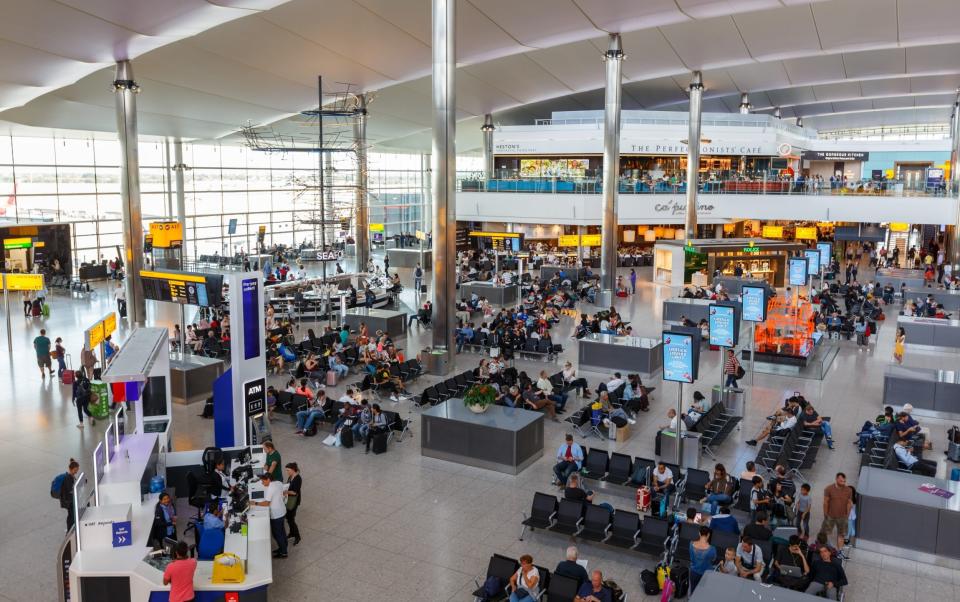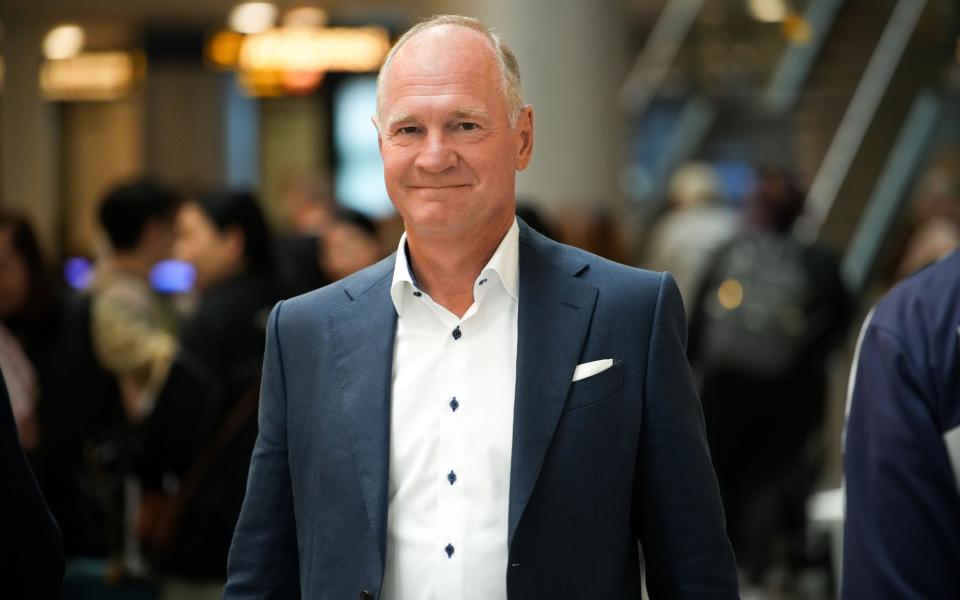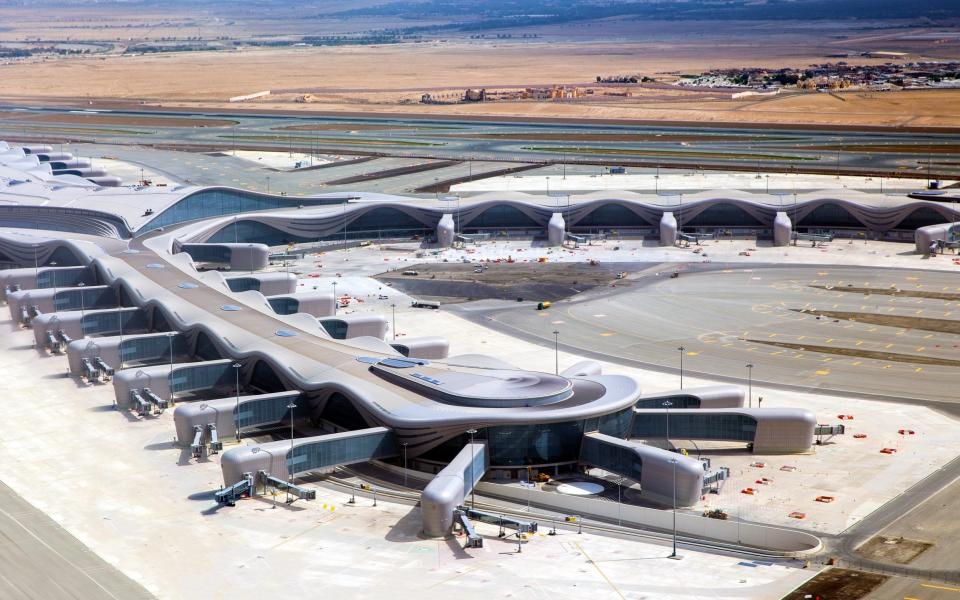Newcastle Football Club, the Independent newspaper, Rocco Forte Hotels, Selfridges, Aston Martin cars and now Heathrow Airport. Saudi Arabia is investing thousands of pounds in Britain, and plans to invest tens of billions more. A consortium backed by the Public Investment Fund (PIF), Riyadh’s sovereign wealth fund, is buying Spanish infrastructure giant Ferrovial’s 25 percent stake in Europe’s busiest hub airport for £2.4 billion with private investment firm Ardian.
It could further increase their stake, giving the consortium majority control. The deal is expected to close before the summer. The PIF says it aims to be a “long-term partner” for the airport.
How will new money – and new Gulf thinking – change Heathrow?


The big issue for passengers, airlines and people living in west London is the issue of the third runway. Many airlines and politicians are pushing for the £14 billion development, to increase passenger capacity to 142 million a year – almost double the record 81 million reached in 2019. It was approved in 2003, but the coalition government withdrew David Cameron’s leadership backed back i. 2015 after an outcry by green campaigners. Theresa May’s government reversed that decision in 2018.
Two years later the Court of Appeal ruled that a third runway would be inconsistent with Britain’s climate commitments. That decision was overturned by the Supreme Court later the same year. Before leaving his post as Heathrow chief executive last year, John Holland-Kaye said he was examining “what it would take to restart the planning process”.
“The airport deserves a third runway,” says aviation analyst Henry Harteveldt of Atmosphere Research. “With the lawsuit settled, I hope it will finally move forward.”
But it seems that the new Arab billions will not be poured into new tarmac. The Sunday Times it was recently reported that a third runway has been shelved. Heathrow executives are understood to think that not only will it be too difficult to get planning permission from environmental opposition, but also that the disruption to road traffic, particularly on the M25 during the construction process, would be politically unacceptable.
Heathrow’s new chief executive, Thomas Woldbye, has publicly denied that a third runway project is off the table, but is said to be looking for new ways to push up to 20 million extra passengers through the airport every year by 2036 without new tarmac. Heathrow badly needs more flights and more passengers. It only offers direct connections to 214 destinations – compared to 330 for Frankfurt, 328 for Paris Charles de Gaulle, and 272 for Schiphol Amsterdam – and has lost its crown as the world’s busiest international hub to Dubai.


But how can it attract more? New, better located terminals and gates would help it handle more aircraft and more passengers faster. There is no Terminal 1 – it closed ten years ago. It could be rebuilt to make room for T2, Heathrow’s oldest terminal, which was demolished and rebuilt as a new home for Virgin Atlantic, Emirates and Qantas, its main carriers. Terminals 1, 2 and 3 could form a central hub to serve all airlines except BA, which would remain in terminal 5.
Terminal 4 could be closed, which would also improve efficiency. T4 is in the wrong place – at the far end of one of the runways, rather than between them like all the other terminals, which means jets leaving and arriving often have to cross a “live” runway, which delays.
Surinder Arora, founder and chairman of the Arora Group, one of the UK’s largest private owner-operators, wants to introduce terminal competition at Heathrow by building a new terminal on land between T5 and the M25 motorway. It could be a new T4.
Some analysts say Heathrow should adopt a “mixed approach” – using the same strip of tarmac for take-off and landing at the same time, which is what happens at single-runway airports, such as Gatwick. To minimize noise pollution for local residents, Heathrow alternates between its runways, using one for take-off for a few hours and then switching to landing and vice versa. Using a mixed mode could increase the number of take-offs and landings by around 30 percent, analysts say. New air traffic control systems, which would reduce the time gaps between take-off and landing, would further increase the number of flights.
Such changes are unlikely to be made anytime soon. Reforms to airport use could require acts of Parliament, and financial analysts say rising costs mean there is little appetite for new construction works. A new T1 and a new T3 would cost around £10 billion. This makes technology the main way to improve efficiency. Here, the new investors from the Gulf have an advantage.
Because all the new airports in the Gulf are so new, they are at the forefront of cutting-edge technology. I was among the first passengers to fly in and out of the new Abu Dhabi Airport after it opened last year, and there are hints of what Heathrow will look like.


It only has “common use” check machines and desks. Departing passengers can use any of the hundreds of automated machines and bag drop terminals for the 29 airlines it serves. Computer chips or QR codes linked to passenger booking information are replacing old-fashioned paper baggage tags. This makes check-in and passport control much faster, the fastest in the world since it uses facial recognition. No need to show your passport. Boarding is also faster, as facial recognition is also used at the gates.
These innovations are being incorporated into the new terminals to be built at Riyadh’s King Khalid airport as the kingdom’s de facto ruler, Mohammed bin Salman, transforms it into a five-runway hub to serve the flag carrier, Saudi, and a new beginning. up carrier, Riyadh Air. Saudi airport operators are also experimenting with X-ray security arches that passengers can simply walk through with their luggage, avoiding putting bags on a conveyor belt and through a scanner.
One change at Heathrow is likely to be low-tech. The airport may only have two runways but it is a huge site – five square miles. There is plenty of space to park jets on remote stands and bus passengers to the stages. Passengers hate it, but if it means more flights and fewer delays, they can accept it. Especially if they need to go to Saudi Arabia. The Saudi investment is likely to make it easier for the new Riyadh Air to secure prestigious slots.